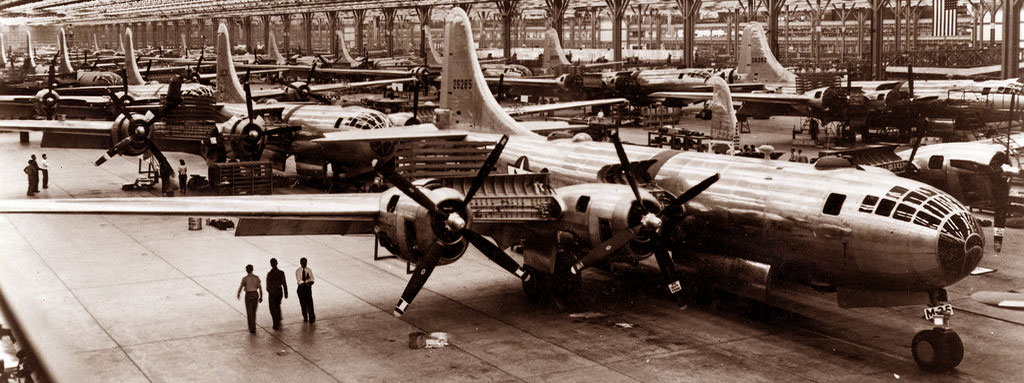We are on the verge of the fourth industrial revolution. And you will wonder, how is that possible, did I miss the day when they taught at school about the second and the third or am I that old (and careless!) that I have skipped two whole revolutions without noticing? Don’t worry too much, I will try to explain below how history has not really changed that much from what we learned back in school, just the names people give to things.
The Factory of the Future will interconnect all elements in the supply chain and the factory itself.
In all cases the future of manufacturing has always been closely linked to new technology development, but usually technology has just been an enabler of a wider concept, of a paradigm underlying an industrial philosophy in its broader sense.
The first industrial revolution, the one we are more familiar with, started in the late 18th century and allowed the shift from hand to mechanical production. The second industrial revolution arrived with the turn of the 20th century and the electrification of the production means. In the 1900s the new paradigm was chain production, adapted by the American automotive industry. I intentionally say “adapted” as interestingly chain production was not invented by Henry Ford or any of his acolytes. Actually this industrial pioneer borrowed the idea from Chicago´s red meat sector, where some visionaries realised the most effective way to dismember animals for human consumption consisted of splitting the not-glamorous-at-all set of slaughtering and boning operations into very basic tasks that could be repetitively performed in a chain much faster than if individual slaughtermen tried to deconstruct their own cattle or lamb into edible chunks.
Non-vegan-friendly anecdotes aside, the second industrial revolution was powered by electricity and driven by chain production, an enabler for economies of scale.
The third industrial revolution came later in the same century with process digitalization. Programmed control, PLCs, electronic data storage, robotics… We could also argue the “spiritual” backbone of this third industrial revolution was the LEAN philosophy, which took manufacturing to higher levels.
In the aerospace industry though, some of the elements of this third industrial revolution have taken long to be adopted. Moreover, some of them have just landed in the industry or are not widely adopted yet. For instance, LEAN production has only been truly adopted by the aerospace industry during the last 10-15 years, while it has been around in the automotive world for many decades.
Another example is automation and robotics. Yes, now we can see robots in an aerospace manufacturing plant, but the reality is the human component is widely prevalent albeit with the help of tools. Of course we have seen for some years now significant robotics inroads into aerospace like automated tape laying machines for big composite components, or drilling machines for specific fastening tasks. However, these are typically big machines which cost is only justified for very particular jobs, and their adoption was mainly driven by accuracy or complexity reasons.
Ironically aerospace, for some one of the most advanced areas of human development, lags compared to other industries. The main reason probably is the handcraft nature of aircraft manufacturing. Airplanes are complex and typically big machines for which production involves multiple tasks, from the most mundane to the most sophisticated assembly operations, and that are produced typically in very short runs. I would also argue the aerospace industry is comparatively slow, old fashioned and not particularly innovative, but will hold that controversial thought for another occasion.
But here it is the good news, the fourth industrial revolution with its paradigm change can come to the rescue of the aerospace industry this time. Industry 4.0, the Factory of the Future or whatever term we want to use, will interconnect all elements (a.k.a. the internet of things) in the supply chain and the factory itself and will allow customised production enter the scene of a play where even large series can be produced while each item is tailored to a set of specifications defined potentially by each individual customer. This new trend, enabled by technological breakthroughs like big data and advanced robotics, even if driven again by the automotive or consumer electronics sectors, will be this time much more accommodating to the aerospace industry needs. How will that happen is the topic for our next discussion though…



